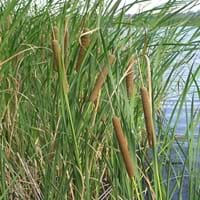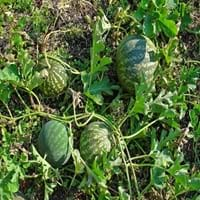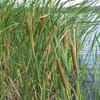Life Span
Perennial
Annual
Origin
North America, United States, Northeastern United States, Mid-Atlantic United States, Southeastern United States, North-Central United States, Central United States, Western United States, California, Canada
Hybrid origin, Africa, Southern Africa
Types
Not Available
Not Available
Habitat
Bog Garden, Ponds
along watercourse, Grassland
USDA Hardiness Zone
3-10
10-12
Sunset Zone
21,22
A3, H1, H2, 1a, 1b, 2a, 2b, 3a, 3b, 4, 5, 6, 7, 8, 9, 10, 11, 12, 13, 14, 15, 16, 17, 18, 19, 20, 21, 22, 23, 24
Habit
Thicket/Colonizing
Prostrate/Trailing
Flower Color
Light Yellow, Light Green
Yellow
Flower Color Modifier
Not Available
Bicolor
Fruit Color
Brown
Green, Crimson, Dark Green
Leaf Color in Spring
Green
Light Green
Leaf Color in Summer
Green
Green, Gray Green
Leaf Color in Fall
Green
Green, Gray Green
Leaf Color in Winter
Not Available
Not Available
Leaf Shape
Flat, Narrow
Irregular
Plant Season
Summer, Fall
Summer, Fall
Sunlight
Full Sun, Partial Sun
Full Sun
Growth Rate
Fast
Very Fast
Type of Soil
Loam, Sand
Loam
The pH of Soil
Acidic, Neutral, Alkaline
Neutral
Soil Drainage
Poorly Drained
Well drained
Bloom Time
Early Summer, Summer
Indeterminate
Tolerances
Wet Site
Drought
Where to Plant?
Ground
Container, Ground
How to Plant?
Divison, Seedlings
Seedlings, Transplanting
Plant Maintenance
Medium
High
Watering Requirements
Needs Very high moisture
Requires consistently moist soil, Requires regular watering, Requires watering in the growing season, Water Deeply
In Summer
Lots of watering
Lots of watering
In Spring
Moderate
Moderate
In Winter
Average Water
Average Water
Soil pH
Acidic, Neutral, Alkaline
Neutral
Soil Type
Loam, Sand
Loam
Soil Drainage Capacity
Poorly Drained
Well drained
Sun Exposure
Full Sun, Partial Sun
Full Sun
Pruning
Remove damaged leaves
Remove damaged leaves, Remove dead leaves, Remove dead or diseased plant parts
Fertilizers
Nutrient Rich Fertilizer
fertilize in growing season, Nitrogen, Potassium
Pests and Diseases
Free of serious pests and diseases
brown-spot needle blight, Cutworms, Downy mildew, Flea beetle, Flea Beetles, Fungal Diseases, fungus, Fusarium wilt, Powdery mildew, Red blotch
Plant Tolerance
Drought
Drought, Salt
Flower Petal Number
Not Available
Single
Foliage Texture
Coarse
Coarse
Foliage Sheen
Glossy
Matte
Attracts
Wildlife
Bees, Insects, Squirrels
Allergy
Mild Allergen
Stomach pain, Throat itching
Aesthetic Uses
Cut Flowers, Wild gardens
Ground Cover
Beauty Benefits
Not Available
Not Available
Environmental Uses
Air purification
Air purification, Food for animals, Food for birds, Food for insects, Versatility
Medicinal Uses
anticoagulant, Diuretic, Haemostatic, Miscellany
High blood pressure, Nutrients
Part of Plant Used
Flowers, Leaves, Root, Seeds, Stem
Fruits
Other Uses
Used as a thickener in soups, Used to make biscuits, Used to produce edible oil, Used to yield a sweet syrup
Used As Food, Used for its medicinal properties, Used in making beverages
Used As Indoor Plant
No
No
Used As Outdoor Plant
Yes
Yes
Garden Design
Dried Flower/Everlasting, Wildflower
Edible, Fruit / Fruit Tree, Herb / Vegetable, Tropical, Vine
Botanical Name
TYPHA angustifolia
CITRULLUS lanatus 'Crimson Sweet'
Common Name
Narrowleaf Cattail, Lesser Reedmace
Crimson Sweet Watermelon, Watermelon
In Hindi
Narrowleaf Cattail
तरबूज़
In German
Schmalblättriger Cattail
Wassermelone
In French
Narrowleaf Cattail
Citrullus lanatus
In Spanish
Espadaña de hoja estrecha
Citrullus lanatus
In Greek
στενόφυλλα Cattail
καρπούζι
In Portuguese
Narrowleaf Tifa
Citrullus lanatus
In Polish
Wąskolistne Cattail
Citrullus lanatus
In Latin
Cattail glaucescens
Citrullus lanatus
Phylum
Magnoliophyta
Embryophyta
Class
Liliopsida
Magnoliopsida
Order
Typhales
Cucurbitales
Family
Typhaceae
Cucurbitaceae
Clade
Angiosperms, Commelinids, Monocots
Angiosperms, Eudicots, Rosids
Tribe
Not Available
Benincaseae
Subfamily
Not Available
Cucurbitoideae
Number of Species
Not Available
Not Available
Importance of Narrowleaf Cattail and Citrullus Lanatus
Want to have the most appropriate plant for your garden? You might want to know the importance of Narrowleaf Cattail and Citrullus Lanatus. Basically, these two plants vary in many aspects. Compare Narrowleaf Cattail and Citrullus Lanatus as they differ in many characteristics such as their life, care, benefits, facts, etc. Every gardener must at least have the slightest clue about the plants he wants to plant in his garden. Compare their benefits, which differ in many ways like facts and uses. The medicinal use of Narrowleaf Cattail is anticoagulant, Diuretic, Haemostatic and Miscellany whereas of Citrullus Lanatus is High blood pressure and Nutrients. Narrowleaf Cattail has beauty benefits as follows: Not Available while Citrullus Lanatus has beauty benefits as follows: Not Available.
Compare Facts of Narrowleaf Cattail vs Citrullus Lanatus
How to choose the best garden plant for your garden depending upon its facts? Here garden plant comparison will help you to solve this query. Compare the facts of Narrowleaf Cattail vs Citrullus Lanatus and know which one to choose. As garden plants have benefits and other uses, allergy is also a major drawback of plants for some people. Allergic reactions of Narrowleaf Cattail are Mild Allergen whereas of Citrullus Lanatus have Stomach pain and Throat itching respectively. Having a fruit bearing plant in your garden can be a plus point of your garden. Narrowleaf Cattail has showy fruits and Citrullus Lanatus has showy fruits. Also Narrowleaf Cattail is not flowering and Citrullus Lanatus is not flowering . You can compare Narrowleaf Cattail and Citrullus Lanatus facts and facts of other plants too.





